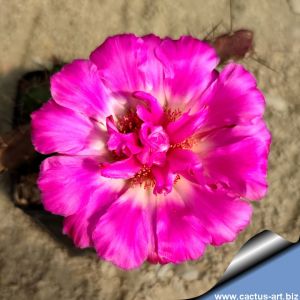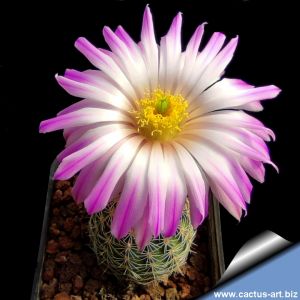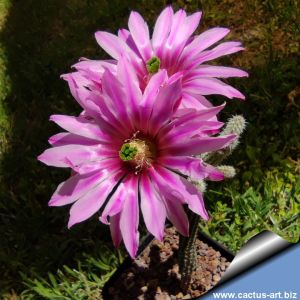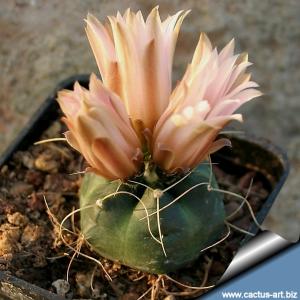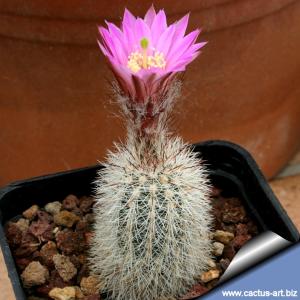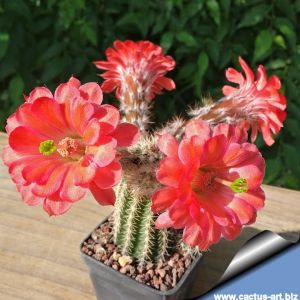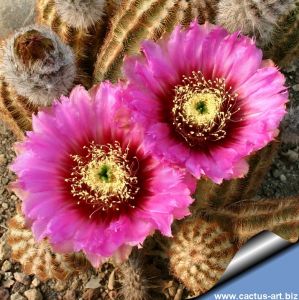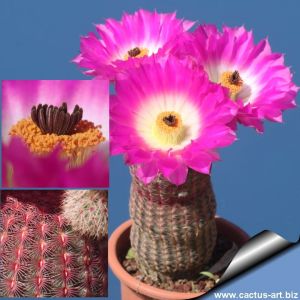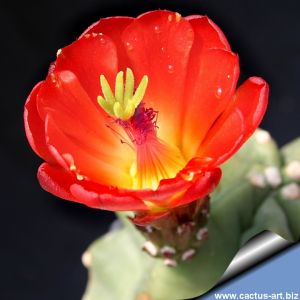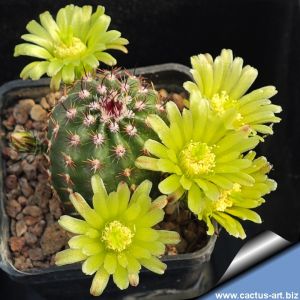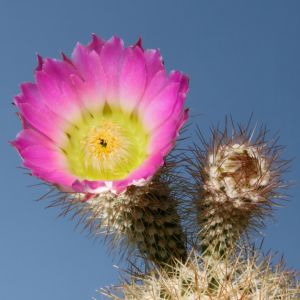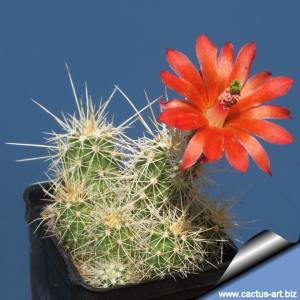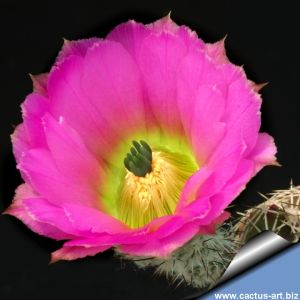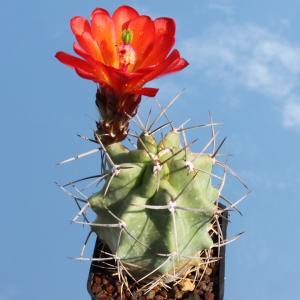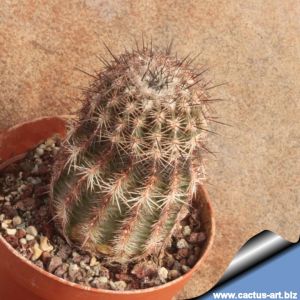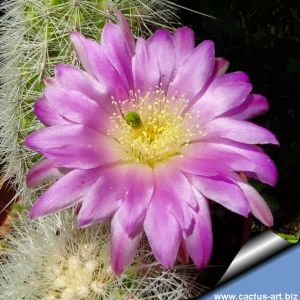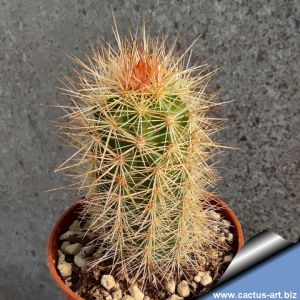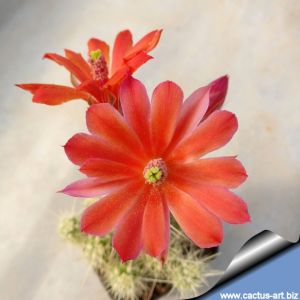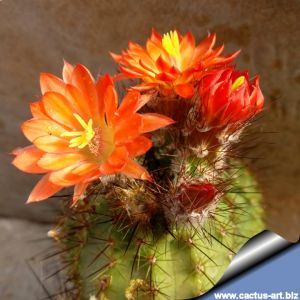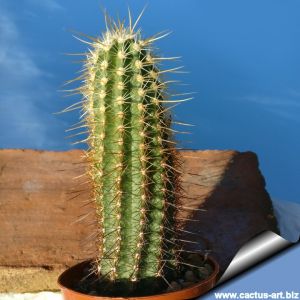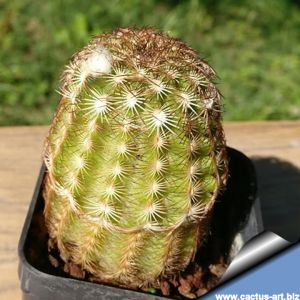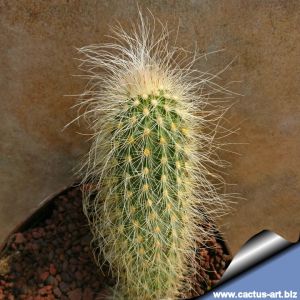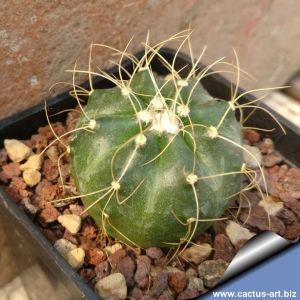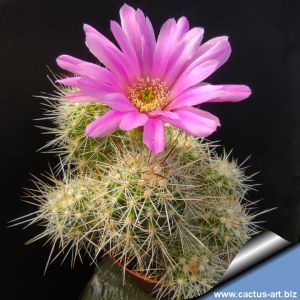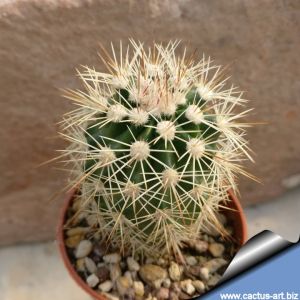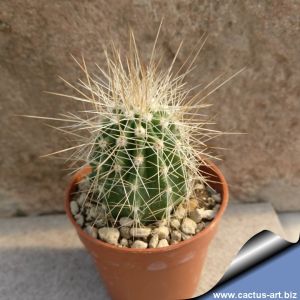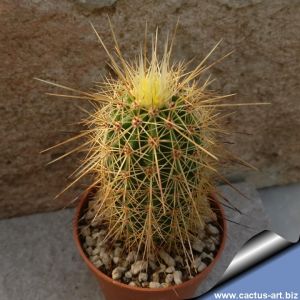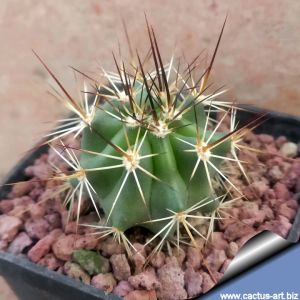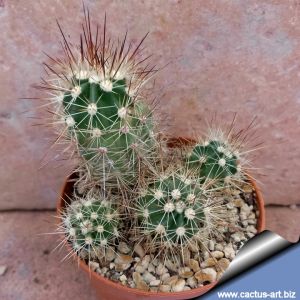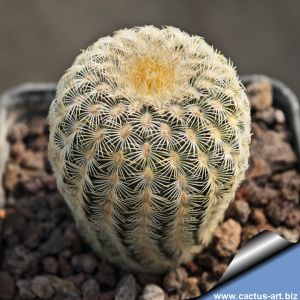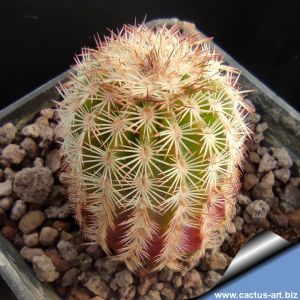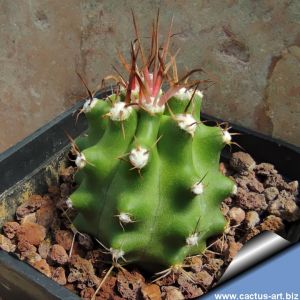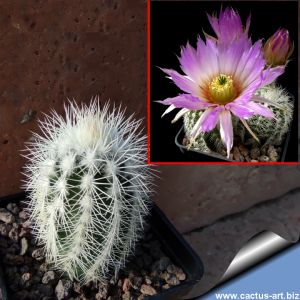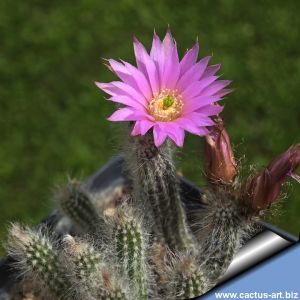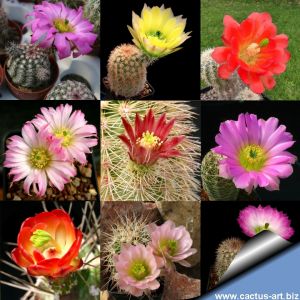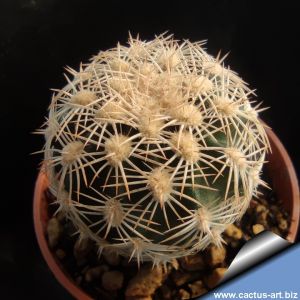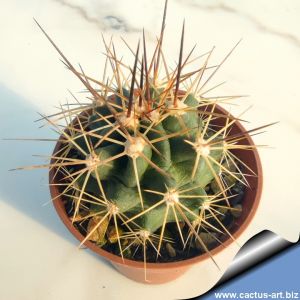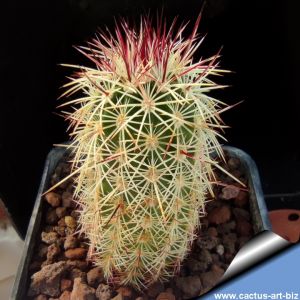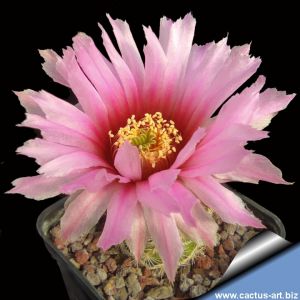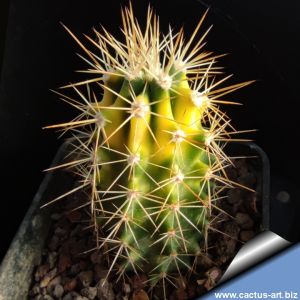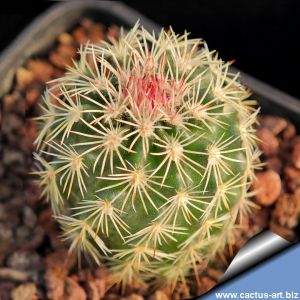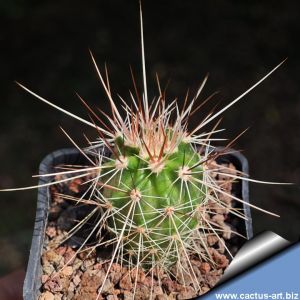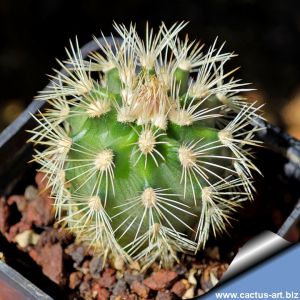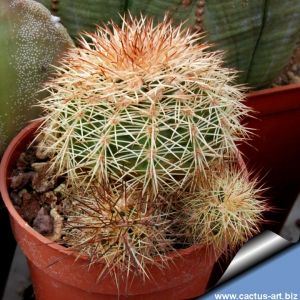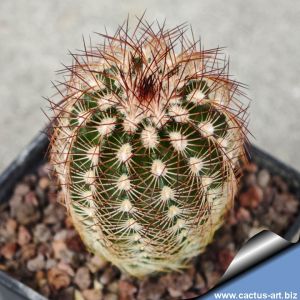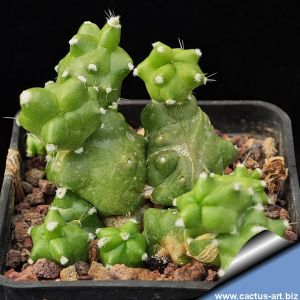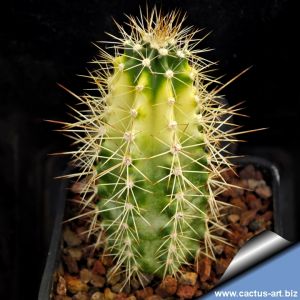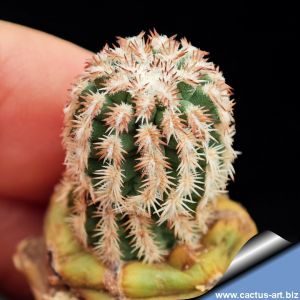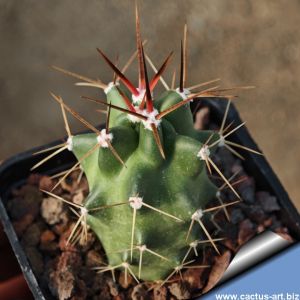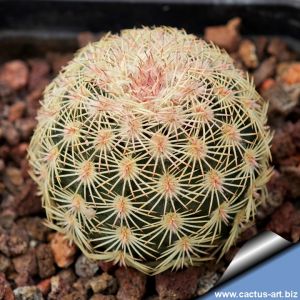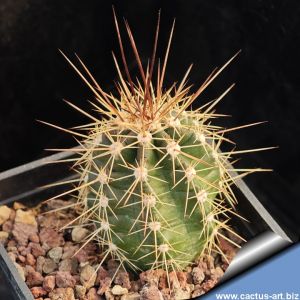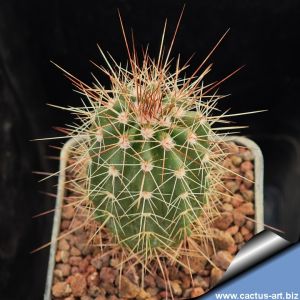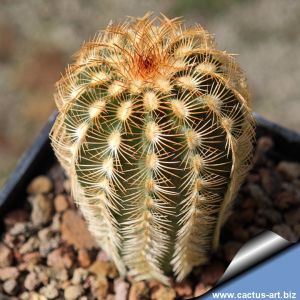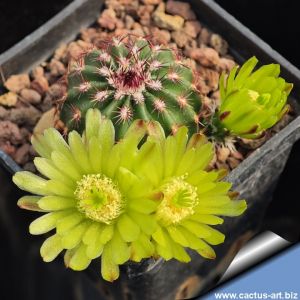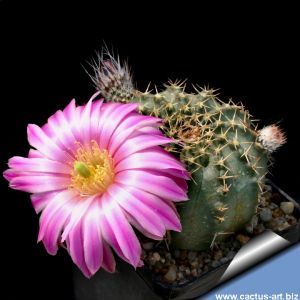-
1
Echinocereus amoenus v. aguirre typically forms small clumps and produces large pink flowers. The stems are not pressed against each other, and the tubercles stand out noticeably. The body color is light green, gray-green or bluish.
-
2
-
3
Echinocereus sciurus subs. floresii, also known as Echinocereus floresii produces bright pink flowers up to 5 cm long and 7 cm wide the sides of the plant, well below the stem tips.
-
4
-
5
This unique and unmistacable species has plump, soft, flattened or globose , dark green stems remenbering an unripe tomato. Large pink flower open in spring. The thick tuberous root requires adequately sized pots.
-
6
E. knippelianus v. krugeri is a miniature form with a plump green body, soft, thin, bristly, and curly spines. The flowers - often larger than the plant itself - are whitish or flesh-colored at the center.
-
7
Small clump-forming species. Heavy bloomer, it starts producing flowers when still very young. Flowers bright pink in sping. Grows together with Mammillaria wrightii v. wilcoxii.
-
8
It is a very untypical Echinocereus that does not take on the usual hedgehog shape. It is long and vine-like with slim, pendant sprawling stems, usually tangled with many branches up to 250 cm long. Rare in cultivation. Beautiful long orange-red flowers.
-
9
-
10
The long tubed flowers are a beautiful deep red. They bloom from April through June, and are very showy.
-
11
Solitary or few branche cylindrical stems. Radial spines, straight or slightly curved, lie close in two nearly pectinate series, white, beige, dull pink, brown, or purplish-black. Central spines often absent. Fragrant dark-purple flowers, 5–7 cm wide.
-
12
This is a "must have" plant for any collection, its attractiveness is in the unique pink and violet colour and density of its spines.
-
13
-
14
This is a very nice plant. The varietal name ‘inermis’ means unarmed, referring to the lack of spines.
The heavy and waxy flowers are red or orange with green stigma in the centre.
-
15
Echinocereus viridiflorus is a small, globular to cylindrical cactus with colorful spines and spring-blooming yellow-green funnel-shaped flowers. Its resilience to cold makes it a favorite among succulent enthusiasts in cooler climates.
-
16
It can grow as many as about 50 stems in a relatively large clump. They bloom from April through July, and are very showy. Blooming generally begins 7 to 10 years after sowing, as the plant matures. In cultivation it often grows for a long time solitary.
-
17
Long, strong central spines. Large pinkish to mauve flowers with a darker center that strikingly contrasts against creamy anthers and a green pistil.
-
18
-
19
Outstanding and incomparable. The flowers have a shocking yellow-green throat surrounded by a contrasting fuchsia corolla. The inner yellow is like the phosphorescent colour of some pen marker or even more luminescent.
-
20
Greyish-green body, rather short greyish spines, many yellow flowers.
-
21
Chunky semi-clumping stems in different spine colors, with nice magenta flowers. Winter hardy/Winterhart.
-
22
-
23
-
24
A short cylindrical cactus that branches freely, entirely covered in dense, snow-white spines that are long, thin, and flexible. Flowers are silky-shining pink-purple with a pale throat.
-
25
Cactus with an impressive array of straight spines up to 8 cm long—light brown, beige, or often bluish—somewhat angled, rather stout, and diverging from the stem. The flowers are very showy, purplish, and measure around 7–8 cm in length.
-
26
This densely spined cactus forms expansive cushions up to 80 cm across, with stems always clustered. Its dagger-shaped spines start pinkish, orange, or red, then fade to white or yellow with brown tips. It bears remarkable pink blooms.
-
27
Dull green body, stout greyishbrown spines, robust red or pink flower. Winter hardy/Winterhart.
-
28
-
29
Showy flowers ranging from orange to pink.
-
30
Long yellowish spines, magenta flowers.
-
31
-
32
-
33
Echinocereus delaetii is covered with long weak bristles or hairs. Over time, it can form wide clumps up to 90 cm accross. It is one of the most remarkable species in the genus, that resembles a small plant of Cephalocereus senilis.
-
34
-
35
-
36
-
37
-
38
Yellow spination, very beautiful plants, dark magenta flowers with spiny tube.
-
39
Pretty form with darker spines, deep pink-magenta flowers.
-
40
Magnificent orange flowers!
-
41
The pale spines form of the famous Echinocereus rigidissimus v. rubrispinus L088 has creamy white spines (not ruby-violet). Its unique-looking tight spination makes it one the the best Echinocereus species.
-
42
Echinocereus x roetteri (Echinocereus dasyacanthus v. roetteri) is Natural hybrid involving Echinocereus coccineus and Echinocereus dasyacanthus. The form SB 993 (Collected by Steven Brack collectein the Otero County, New Mexico) has brilliant red flowers
-
43
-
44
Echinocereus freudenbergeri L1032 grows in the Sierra de la Paila, together with Gymnocactus aguirreanus and Escobaria zilziana. It has clustering cylindrical stems with dense yellowish spines, longer brown central spine, fantastic pink flowers.
-
45
Echinocereus reichenbachii ssp. baileyi 'minor' (albispinus) has small multi-clumping stems with mainly white spines. Medium light pink flowers with white centers. Winter hardy/Winterhart.
-
46
Small, branched cactus with tuberous roots and slender stems up to 25 cm long and 1 cm in diameter. The spines are hairlike, ranging from cream to whitish-grey, reddish at the tips, giving the stems a woolly look. Synonim: Wilcoxia schmollii.
-
47
Mix of Echinocereus assorted with various species and seed-grown hybrids. Each plant is one-of-a-kind, featuring unique shapes, spination, and flower colors.
-
48
E. pectinatus v. ctenoides is a cylindrical Echinocereus species related to E. dasyacanthus.The stems are banded with pink and grey as in the rainbow cactus (E. rigidissimus). The flowers are yellow, orange and very large for the size of the plant.
-
49
Clumping cactus forming large dense clusters. Funnel-shaped bright orange-red flowers emerge near stem tips. Remarkably winter hardy - for rock gardens or container cultivation in cold climates.
-
50
-
51
Small, brown, bristle like spines, wonderful pink flower with a dark throat.
-
52
Sometimes, variegated plants with yellow markings emerge among regular seedlings. They are rare, sold in small batches, and future stock cannot be guaranteed.
-
53
Long flower tube, very pretty orange-red flower.
-
54
Group forming, brown straight spines, slender stems, long orange flower!
-
55
Dense, vivid spines in shades from white through yellow to purple-red. Bears odd yellowish-brown flowers.
-
56
-
57
Group forming, long straight red-brown-white spines, huge pink flowrs. Grows together with Mammillaria setispina, Mammillaria dioica, Echinocereus ferreirianus and Ferocactus peninsulae.
-
58
Beautiful yellow flower with orange thin stripes, nice bright spination.
-
59
Echinocereus x lloydii is a naturally occurring hybrid between E. coccineus and E. dasyacanthus. Super flower! Usually orange, but also red, pink or yellow.
-
60
Long brown spines. Flower pink. Winter hardy/Winterhart (minimum temperature -20°C).
-
61
Light green segments, with almost bare areoles or with a few thin spines. Some branches irregularly crested. It is a robust plant, easy to grow that forms large tufts in a short time.
-
62
Among standard seedlings, variegated plants with yellow patches on the epidermis may occasionally appear. Selected variegates are sold in limited quantities, with no guarantee of future availability.
-
63
This cultivar's short, pectinate spines and geometric perfection make it a collector's must. Propagation is challenging (grafting only), enhancing both its value and scarcity in cultivation.
-
64
Rare white flowering form! Later forming pretty clusters. Winter hardy/Winterhart.
-
65
Cute! Flowers with shades ranging from pink to purple, with pectinate spines in a delicate pink-beige color. Each plant, in spring, produces 1 to 5 buds, offering a spectacular and distinctive bloom.
-
66
Long flower tube, pretty reddish-orange flowers. Older plants grow basally branching, needle-like spines.
-
67
Rare variety that differs from the typical E. palmeri by having smaller stems with tuberculate ribs and fewer radial spines. The flowers are deep magenta.
-
68
A very spiny, clump-forming species with robust stems and numerous needle-like spines; The central spines are longer and sharper, dull white to brownish with darker tips. Flowers with long spiny tubes and red-orange petals.
-
69
White spination, nice pink flower, very large.
-
70
Hardy plants for rock gardens or sunny balconies—thrives year-round! Cold-resistant . (Winter hardy/Winterhart). Massive fuchsia blooms appear in June and last remarkably long.
-
71
Hardy plant native to the cold mountains of Colorado, featuring greenish-yellow flowers with a delightful lemon scent. Perfect for rock gardens and sunny balconies, this cold-resistant species can thrive even in harsh climates. (Winter hardy/Winterhart)
-
72
Low-growing greyish stem with short white spines. The charming short pink flowers add a delicate touch to this neat, compact plant. Absolutely lovely!


